- Home
- Bill James
The Principals Page 3
The Principals Read online
Page 3
‘Height is going to be a problem,’ Angela Drape (Environmental Engineering) said, her voice big, accustomed to reaching the back of a lecture room. It was the second meeting of the Commemorative Statues Committee. Several departments had been asked to supply one of their staff for the C.S.C. ‘There aren’t any actual measurements available as far as I know, but judging from photographs I’d say Victor Tane must have been at least six foot four, as against Chote’s five foot eight or even five foot seven.’
‘A problem in which way?’ Bill Davey (French) asked.
‘If they’re put alongside each other to suggest equality of achievement – and this, surely, is how it has to be – in such proximity Victor Tane is going to dwarf Chote, make him look like a ballboy,’ Angela replied. ‘This is hardly the theme we’re seeking to display in the two images. The very opposite.’
‘We can’t have Chote standing on a box to make up the difference, the way they did for Alan Ladd in his movies,’ Claud Nelmes (Physics) said. Nelmes liked a joke, a joke always delivered deadpan; and, because most of his jokes were feeble, hardly jokes at all, many people didn’t get that what he’d said was one: dead-and-buried-pan.
‘But some statues have a plinth,’ Bill Davey said. ‘Chote could be jacked up a bit on one of those. Watching Antiques Roadshow not long ago I saw a statue of the boy David taking aim with his catapult to do Goliath and the kid definitely had a plinth. I got the idea he needed that plinth as much as he needed the catapult.’
‘Surely most statues have plinths,’ Lucy Lane (History) said, putting her nose-picking on hold while she spoke. ‘Perhaps all. If Chote gets a plinth it would be an obvious requirement for Tane to get one, too. In any case, if he didn’t have a plinth what would Tane’s legs and feet actually be standing on? Indeed, plinthless, would Tane be able to stand at all? The point about plinths is that the subject’s feet are of a piece with the plinth. Clearly, the feet are not feet in our usual day-to-day meaning of feet and capable of making a platform for their owner, enabling him or her to participate in cross-country or relay sprint races. Neither of the statues will be taking part in that kind of activity, though they were both highly competitive beings! These feet represent feet but are, in reality, shaped stone and of the same chunk of stone as is the plinth. This is the essential. Sculpted feet have no separate existence from the stone plinth on which the feet appear to rest, but do not rest in our normal use of that word, because the feet and the stone plinth are integral.’
‘Those feet are not made for walking, regardless of the old song,’ Davey said.
‘I think we have to concede that both statues will require plinths,’ Angela Drape boomed. ‘Different size plinths would put us back to the same quandary as arises from the variation in height between Tane and Chote. A larger plinth for Chote would be seen as a sort of pitying aid to someone rather stunted. I can envisage the Chote statue coming to be dubbed among undergraduates “Principal Plinth”.’
‘We need to consider whether the statues have to be painstakingly, rigidly accurate as to height,’ Wayne Ollam (Philosophy) said. ‘Are we bound to reproduce their physiques exactly as in life?’
‘We would possibly need to take advice from the sculptor on this,’ Mart Moss said. ‘Perspective, scale, contextual background are matters for a professional, I believe.’
‘As Lucy very validly pointed out with regard to feet, these sculptures will be representations of the two subjects,’ Ollam replied ruminatively. ‘Likenesses. They will not have blood or bones. So, if they are to dispense with those human properties, are we obliged to try for strict accuracy as to tallness, shortness, fatness, thinness? Why this selective scrupulousness? Where is consistency? The great sculptors might be able to suggest blood and bones behind the surface of their work, but it is only a suggestion.’ Ollam’s way with emphases was mild but effective, Mart thought – perhaps more effective because the listener would not feel button-holed, bullied and brayed at, and therefore resistant to the message.
‘The spectator infers the blood and bones but this inference is a tribute to the sculptor’s skills; and if there is no spectator – say when a gallery has closed for the night – if there is no spectator to infer the living innards then that statue has no innards. It is stone, end of story. I know some sculptors claim that the finished, statued figure is actually implicit and detectable by them in the block of stone when it is just a block of stone. Arty bullshit, I’m afraid.
‘Consider Rodin’s Le Penseur, The Thinker. This is a man seated, sort of crouched forward, his hand up to his chin, as if he’s giving some topic a hell of a lot of concentration. But notice that “as if”. We – the viewers – have to imagine the statue’s brain must be really whirling. We can’t see his brain, though. We have to take his brain on trust. What we’re looking at is a lump of bronze – not stone now – bronze that Rodin has worked on with his chisel so as to make us say, “If this were somebody real he’d obviously be trying to work something out in his head, truly cogitating in an unhurried, plodding fashion.” We don’t get into that head. We have to help Rodin by picking up the hints and doing a deduction from them. We are dragooned by our culture and by habit to supply what Rodin can’t – the “thinks” of the thinker. What I’m saying is that statues of their nature, yes of their nature, cannot give a full, as it were, account of the person they are meant to resemble and therefore, by extension, the physical appearance of the statue need not be slavishly, pedantically focussed on such banal, virtually random matters as height, girth, general build.’
Elvira Barton (Classics) said, ‘I would put this in terms of a syllogism, the medieval style of debate where there are certain assumptions which may be or may not be accepted by both sides; and a conclusion that is deemed valid or invalid. It’s like this: all statues are essentially lifeless; lifelessness is clearly not a characteristic of life; therefore, no statue need embody every aspect of the person featured in the statue whether still alive or having been alive.’
‘But if Lawford Chote had been a dwarf it would surely be ridiculous not to recognize this in his statue,’ Jed Laver (Industrial Relations) said. ‘People who remembered him when alive would inevitably have his dwarfdom in mind as one of his most headline characteristics. I do not mean in any respect to mock or malign dwarfs but their stature is bound to be a distinguishing factor. Acquaintances, relatives, friends, even enemies, would definitely feel there was something wrong about the statue if it ignored that basic element. After all, the dwarfdom might have psychological implications – inner resentment that he should fall into this category; perhaps a special vigour and defiance in an understandable attempt to assert he can deal with any problem as efficiently as taller folk can.’
‘Why do you pick on Lawford Chote for this unpleasant fantasising?’ Gordon Upp (Linguistics) asked.
‘No intention at all to denigrate Chote in any way, Gordon,’ Jed replied. ‘I could just as easily have used Victor Tane’s name, though dwarfdom for somebody well over six feet is perhaps more difficult to reconcile, even in a make-believe narrative.’
‘And you didn’t fucking well pick Victor Tane, did you? You reserved your vicious, bilious meanderings for Lawford.’
Martin Moss said, ‘I feel we have had a very productive early stage meeting. Certain boundaries and central objectives have been identified and positively, promisingly, touched on. This will set us up very well for our next scheduled session in a fortnight. I have no doubt some informal private discussions will take place in the interim between committee members and we should all return ready to take matters in this supremely worthwhile project a further distance forward.’
SIX
1987
‘Do I understand him right, Mart?’
‘Who?’ Moss said.
‘Al Norton-Hord,’ Rowena Chote said. ‘About the signals, or no signals, from the Universities Finance Centre. What did the signals say, if there were signals?’
‘I’m not sure I understood that
myself,’ Moss said. The dinner following his inaugural had ended and people were dispersing. Rowena Chote had made her way to him, as if to offer a handshake and hug in final congratulation; but he realized now mainly to quiz him about what the journalist had said. Norton-Hord had already left.
Mrs Chote would be in her late forties. She had a broad, friendly face, alert blue-grey eyes, perhaps refreshed by the lecture room snooze. Mart had been in company with her before and knew she had a big, loud laugh, but only when she found something genuinely funny, not just an attempt to break the ice or indicate a disarming, sociable nature. She wore a blue, two-button wool jacket over a lattice topped white blouse, and blue long-panelled skirt. Her hair was assisted fair-blonde worn at shoulder length. She had a snub, small nose, but, as they all knew now, obviously capable of that noisy, disproportionate snore din; yet also to sniff subconsciously that it was time to wake up and hear some stuff about interesting sex.
‘And the comparison with a similar situation in Wales,’ she said. ‘What situation?’
‘Expenditure outstripping income, I imagine. It’s happening to most universities to a major or minor degree because of government cutbacks, even Oxbridge,’ Moss said.
‘And here, at Sedge, it’s a major crisis, is it?
‘I don’t think Norton-Hord said a crisis, did he?’
‘No, his tone said crisis, though,’ she answered. ‘He spoke of signals and the U.F.C.’s possible irritation with Sedge, and presumably with Lawford.’
‘It wasn’t clear where his information came from. But was there information at all, or just a volley of questions?’
‘He’s a journalist. Most of their information comes from other journalists, doesn’t it? Sometimes it’s right, all the same. It’s how Lawford seemed to take it, wouldn’t you say? The signals, the irritation. That’s what they appeared to mean to him. Suggestions of trouble – of crisis, yes. He was rattled. We came very near to one of his famous in-depth, state-of-the-nation, rages. I called time – and only just in time.’
‘The move into dinner?’
‘I have to look after him, Mart. He’ll sail daft and determined towards heavy weather. In some ways it’s admirable, loveable in him. Courageous. Defiant. But also obsessive, egotistic, vain, suicidal?’
‘He does stir up the adjectives.’
‘I hope you will help me with this. He’s got a good cause, higher learning for anyone who wants it, and thinks this such an obvious boon that as long as he doesn’t waver it’s bound to convince others and win through. This is a mission with him, a holy grail job. But it isn’t bound to. He could get mangled. We must have some real politik. My speciality, but I need help with it.’
This made two of them – Mrs Chote and Chote himself – asking for Martin’s assistance. He hadn’t known that literature professorships at Sedge came with so much baggage. As Mrs Chote had said, Lawford Chote did have a good cause and Moss would back it. But, as she’d also said, not everyone admired this objective, and some of those who didn’t were powerful and clever and ruthless and intent on hacking away at public spending, university public spending in particular.
Mart was out for a spin in Chote’s office Volvo, the principal driving. He’d asked Martin to come for an excursion with him and take a look at Charter Mill. The invitation had seemed to Moss loaded with a kind of special excitement, perhaps touched by some of that obsessiveness Rowena had mentioned as strong in Lawford. Moss felt it was as if Chote believed the sight of the Charter layout – the actuality of it: brickwork, cement, windows, doors, footpaths, the ‘Charter Mill University’ name board, gold lettering on black – yes, these undeniable proofs of brazenly being there, would help show Mart that a change was required, urgently required.
Maybe Chote remembered an episode in Boswell’s The Life of Samuel Johnson where they were discussing Bishop Berkeley’s theory of the non-existence of matter. Boswell declares it’s hard to refute this. In response, Johnson gives a large stone a hard kick and says this is how he refutes it. Did Chote want to show Mart the reality of Charter Mill and so persuade him that in the present tight national economic circumstances, Charter should be part of Sedge, and part of Sedge soon, for its own good as well as for wider reasons? Chote might believe that almost anyone would be convinced of this, but especially somebody as enthusiastic about higher education as a new, go-ahead, perceptive prof who had detected unconventional hetero-bonking in Lady Chatterley’s Lover and knew how to talk about it with delicate tact.
‘There’s much that’s admirable about Charter, I would never deny it, Mart, but what’s an imperative now is for it to be brought to full fruition. This simple move will benefit everyone. When I consider Charter, I imagine how the great landscaper of the eighteenth-century, Lancelot Brown, might have reacted to it: “This bog-standard little lot has capabilities.” The watermill? Of course, living locally, you’ll have seen it before today. It has charm. Gimmicky? Yes, but I’d be willing to keep it in place for a year or two. There’d be no real point after that, would there, when the name and identity of “Charter Mill” have been expunged? I don’t mind an occasional slip into sentimentality as long as it’s only occasional.’
Chote was silent for a while, as they drew close to Charter. ‘They’re putting a gaggle of auditors into Sedge, you know, Martin.’
‘Who?’
‘Universities Finance Centre, alias the fucking philistine, fascist government.’
‘Is that what Norton-Hord was talking about?’
‘Of course, they’ll come looking for faults and trying to slant things that way,’ Chote replied. ‘They’ll have been briefed – i.e., brainwashed. These people live with figures and know how to cook them to suit whatever the doctrinaire politicos want. Will they get anywhere near understanding the Sedge-Charter Mill situation?’
‘The situation in which sense?’
‘The sense that unification, merger, takeover – whatever term we use for it – such benign unification will see the end of any difficulties Sedge might have, or any that Charter Mill might have, too. They should realize – should be helped to realize – that the solution to any troublesome circumstances is right there in front of them, plain and guaranteed. If Norton-Hord comes to you for insights on things between Sedge and the U.F.C. it would be best to explain matters to him along those lines, Mart. He’s a reasonable bloke. I got somewhat ratty with him the other evening, but he knows that’s only the unmalicious knockabout of debate. Healthy. Challenging. Honest.’
But he more or less snarled these terms. He probably despised their comfy, prim harmlessness. ‘OK, the Charter Mill property is functional bordering on hideous, and many of the courses offered there are somewhere between workaday and farcical, but I’m willing to take them on, the whole package, Mart. It’s necessary for the eventual good. It would be dereliction on my part if I didn’t seek to organize rescue.’
Moss felt uneasy. Was he being sucked into croneydom, as others, like Roy Gormand, had been? Did the share-my-pilgrimage-out-to-Charter edict show a wish by Lawford to bring Moss into his select, inner cabinet? It was as though Chote had said, ‘Come join with me in sizing up a piece of real estate that we – you, I and others akin to you – will benignly grab for our portfolio, acting out of generous kindness to the Victor Tane combo. And, if you should be talking to Norton-Hord, talk to him as I recommend you talk to him and not as you might have talked to him if I hadn’t had a word with you, Mart, about how to talk to him.’
In general, Moss saw the reason for Chote’s colonising campaign and thought it right. Some of the detail troubled him, though. Martin knew that no grand, mystical experience would take a hold on him as they ogled Charter Mill. And if that had been what Lawford wanted for Moss, he had failed.
SEVEN
2014
‘Proximity,’ Lucy Lane said, her thin face taut with triumph, as though hooking and landing this notion had been a fearsome struggle but, now, here it was, conclusively ashore. ‘Have we properly
considered whether proximity is essential?’ Using a tartan-themed handkerchief, she wiped one of her fingers. This cleansing job went on for more than a minute while she tried to dislodge one super-sticky bit of nose debris from under her index nail.
‘Proximity in which regard?’ Bill Davey asked. The Commemorative Statues Committee (C.S.C.) was in session again, Mart Moss chairing, as before.
‘Are we assuming, without due thought and analysis, that Lawford Chote and Victor Tane – the statues of, I mean, obviously – are we assuming that Lawford Chote and Victor Tane, or to reverse this for impartiality’s sake, Victor Tane and Lawford Chote, have to be placed close to each other? What I meant by “proximity”. It is this envisaged proximity, isn’t it, that gives rise to the height problem? Proximity will invite comparisons; no, will enforce comparisons, in fact. Someone short alongside someone tall, or to reverse it, someone tall alongside someone short, is bound to be noticeable. I recall that television sketch about social class, with the tallest man on the left representing the upper class, someone not quite as tall representing the middle class, and someone short representing the lower class. The differences in status are quickly made graphic by these, as it were, symbols. Something similar might occur in people’s reactions to the two statues if they are, so to speak, cheek by academic jowl.’
‘And yet some might think of the Book of Amos, chapter 3, verse 3,’ Elvira said.
‘Might they?’ Lucy said.
‘“Can two walk together except they be agreed?”,’ Elvira replied. ‘This is what’s known as a rhetorical question, being, in truth, no question at all because the answer “No” is built-in. The Bible is fond of rhetoricals. Probably the first is, “Am I my brother’s keeper”, Cain requiring an “Of course not” from God?’
‘True,’ Angela said.
‘Putting me in mind of the three-legged race at school,’ Gordon Upp said. ‘A pair of contestants have their right and left legs tied together and they must not simply walk but run as a unit, so they certainly need to agree about how to do it or they’re liable to pull each other over. Same with coalition governments: some progress possible, but, also, some bad difficulties.’

 I Am Gold
I Am Gold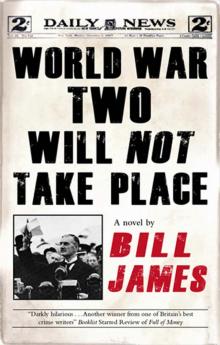 World War Two Will Not Take Place
World War Two Will Not Take Place Pix (Volume Book 24) (Harpur & Iles Mysteries)
Pix (Volume Book 24) (Harpur & Iles Mysteries) Disclosures
Disclosures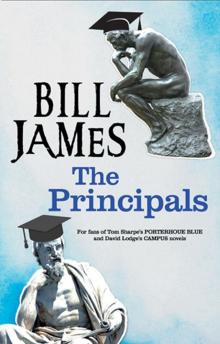 The Principals
The Principals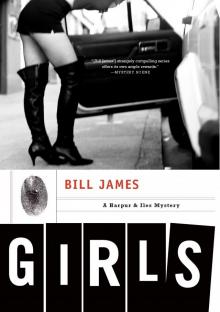 Girls
Girls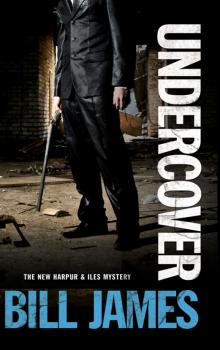 Undercover
Undercover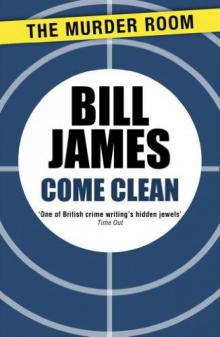 Come Clean (1989)
Come Clean (1989) Close
Close Blaze Away
Blaze Away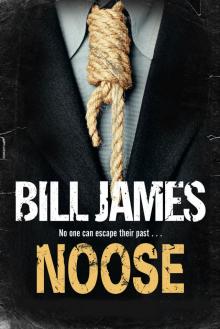 Noose
Noose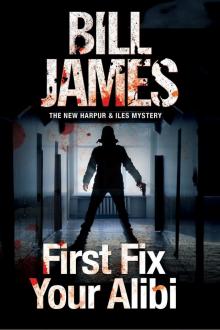 First Fix Your Alibi
First Fix Your Alibi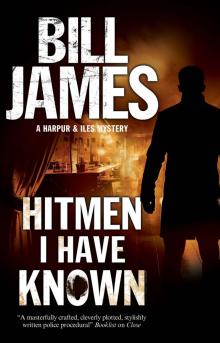 Hitmen I Have Known
Hitmen I Have Known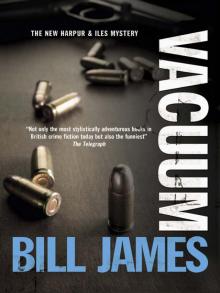 Vacuum
Vacuum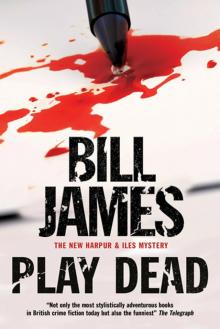 Play Dead
Play Dead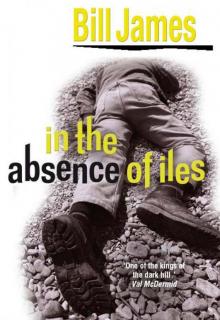 In the Absence of Iles
In the Absence of Iles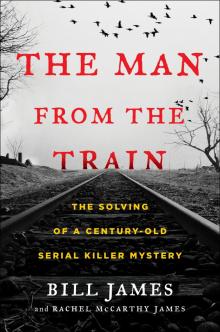 The Man from the Train
The Man from the Train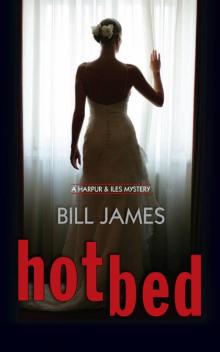 Hotbed
Hotbed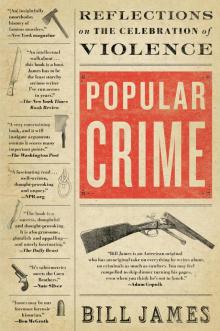 Popular Crime
Popular Crime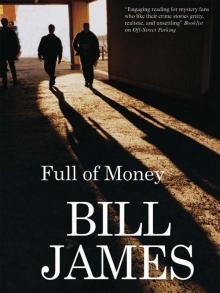 Full of Money
Full of Money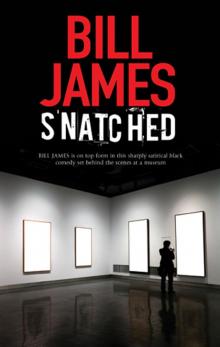 Snatched
Snatched